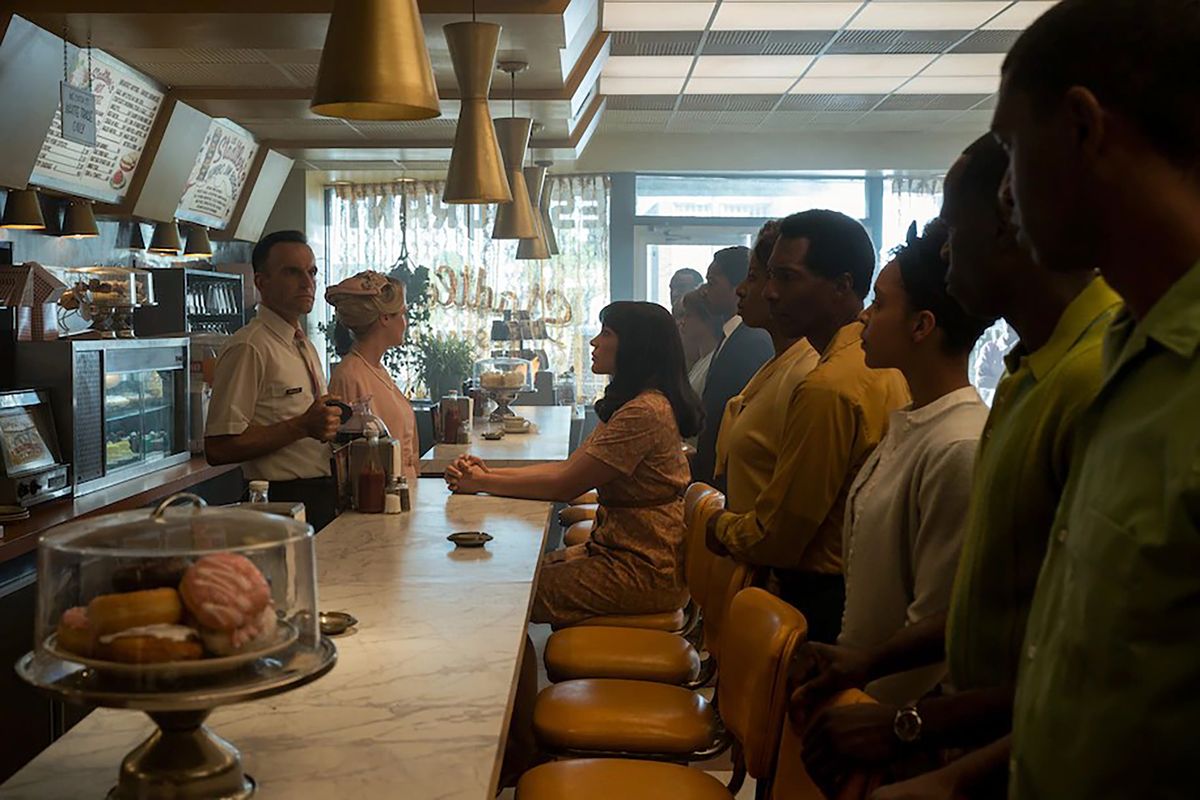Netflix’s ‘Umbrella Academy’ takes on the 1960s – and becomes unexpectedly relevant to 2020

“The Umbrella Academy” was destined to jump to Dallas in 1963 for Season 2 – that’s what happened next in the time travel-themed comic book series. But no one anticipated how relevant the setting would be.
The season, which is now streaming on Netflix, takes its cues from the second volume of Dark Horse Comics’ hit series (“The Umbrella Academy: Dallas”) by rocker/writer Gerard Way and Brazilian artist Gabriel Bá. The reluctant anti-heroes get marooned in their new setting but have to race against a ticking clock to prevent the end of the world.
Filming wrapped in Toronto in November. But when protests for racial justice began in late spring, showrunner Steve Blackman realized the season’s themes would run parallel to those in the news today.
The 1963 Dallas setting is a link to the John F. Kennedy assassination, which plays a part in the story. But Blackman was interested in going beyond the comics and showing how being dropped in the Deep South in the early 1960s would affect the diverse roster of characters from the present. The superpowered team, featuring members who are African American, Latino, Asian (albeit a dead ghost and not visible to everyone), gay and part ape, would have to feel the stark differences of a less-tolerant period.
“We knew that racial issues couldn’t be ignored or glazed over simply because we’re a fantasy show,” Blackman told the Washington Post. “I knew that if I was going to do the 1960s, and I had a woman of color, Allison, I wanted to tell a civil rights story.”
Allison, the team’s lone black member (played by actress Emmy Raver-Lampman), has the power to make people do whatever she wants just by saying “I heard a rumor.” She and her other Umbrella Academy brethren quickly adapt to their new setting. Allison gets married and becomes a part of the rising civil rights movement, participating in sit-ins and organizing protests with other Black residents.
Her husband (played by Yusuf Gatewood) is the victim of a brutal beating by police. The scene was intended to give an authentic look at what Blacks who protested for their rights in the American South of the ’60s went through, but it also serves as a mirror to the real world more than 50 years later, echoed by the death of George Floyd at the hands of Minnesota police.
“We wanted to make it feel real. It was like that in 1963. Those two days we shot on set to do Emmy’s scene with the sit-ins, it was really an emotional night for her and the director and the crew,” Blackman said. “I made (the cast and crew) a promise to be as authentic as I could. We hope we achieved that. It’s fascinating to see how our show is more relevant now than we thought it would be.”
Allison’s storyline this season wouldn’t have been possible if Blackman hadn’t made the decision before “The Umbrella Academy’s” first season in 2019 to diversify the team’s roster. In the comics, the team debuted with an all-white roster in 2007.
“I wanted to tell a lot of different stories, and having a diverse cast gives you that opportunity,” Blackman said. “(Way and Bá) were completely supportive from the very beginning. One of the first conversations I had with Gerard, we talked about diversity. He said, ‘Please make this cast diverse.’ ”
Blackman also didn’t want to ignore the impact the ’60s would have on the show’s queer characters. Klaus (Irish actor Robert Sheehan), the humorous and usually high or drunk (or both) team member who can see and speak to the dead, is attacked after being vocal about his feelings for another man. Vanya (Ellen Page), the most powerful of the Umbrella Academy, falls in love with a woman who thinks society won’t accept the way they feel for each other.
“Having Ellen Page being such a big face of the LGBTQ community, it was important for me to tell those stories honestly,” Blackman said.
Blackman, Way and Bá all knew the original comics had plenty of storytelling fruit to pick for the Netflix version (including Carmichael the talking goldfish, who debuts this season), but a full-blown, panel-for-panel retelling wouldn’t be possible.
“Early on, we realized that we couldn’t be a carbon copy,” Blackman said. “Part of it was there’s a lot of nonlinear narrative in the graphic novel. And also, I have to do (the entire story) in a 10-hour window. I am really respectful of the fans of the graphic novel, and I’m always trying to give them something (from the comics) that really excites them.”
Blackman says Way and Bá are currently working on “The Umbrella Academy’s” fourth volume at Dark Horse. When asked whether he could ever envision a “Game of Thrones” situation where his series has sprinted past the books, he said his positive creative relationship with Way and Bá would make that possibility bearable.
“Gerard and Gabriel could probably make these (comics) for the next 10 or 15 years if they wanted to,” Blackman said with a laugh. “For me, I feel even if we got a bit ahead, I could simply talk to the guys and say, ‘Where are we going with this?’… and I feel sort of protected by that. And I wouldn’t want to do it if I didn’t have their support.”